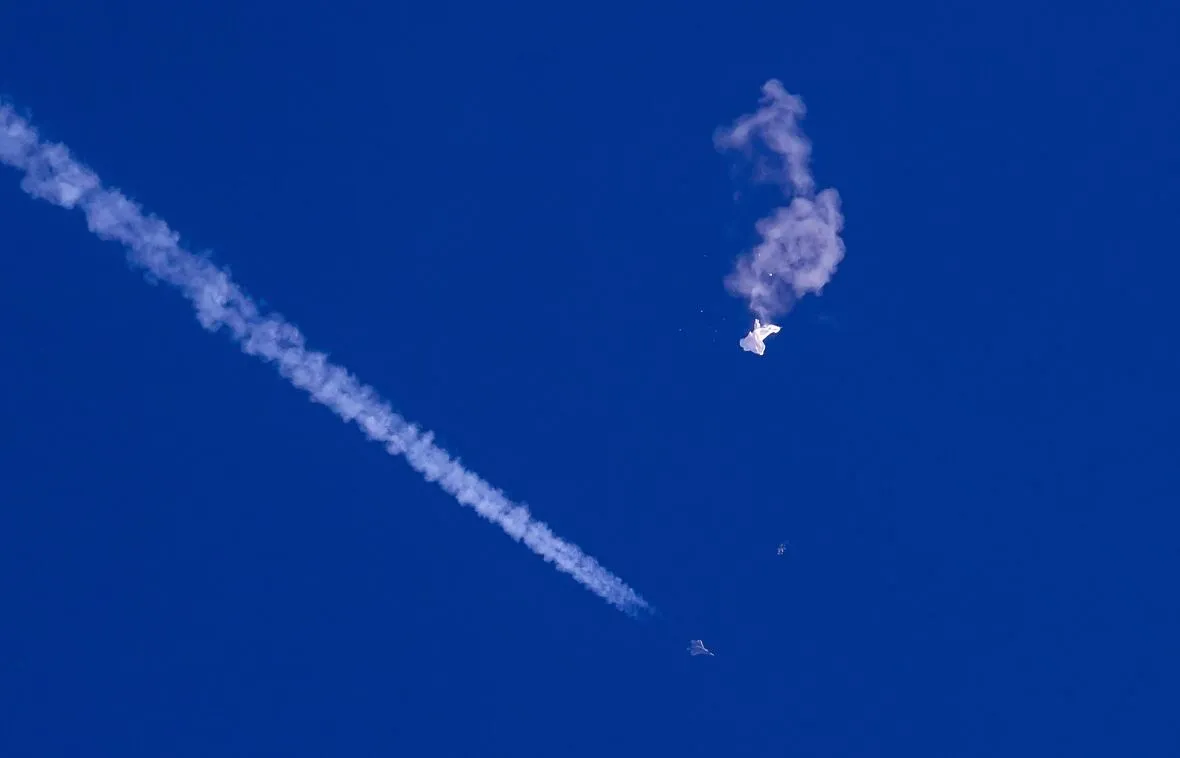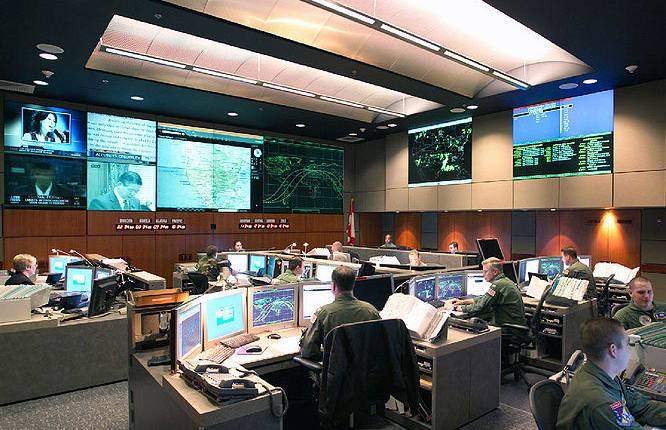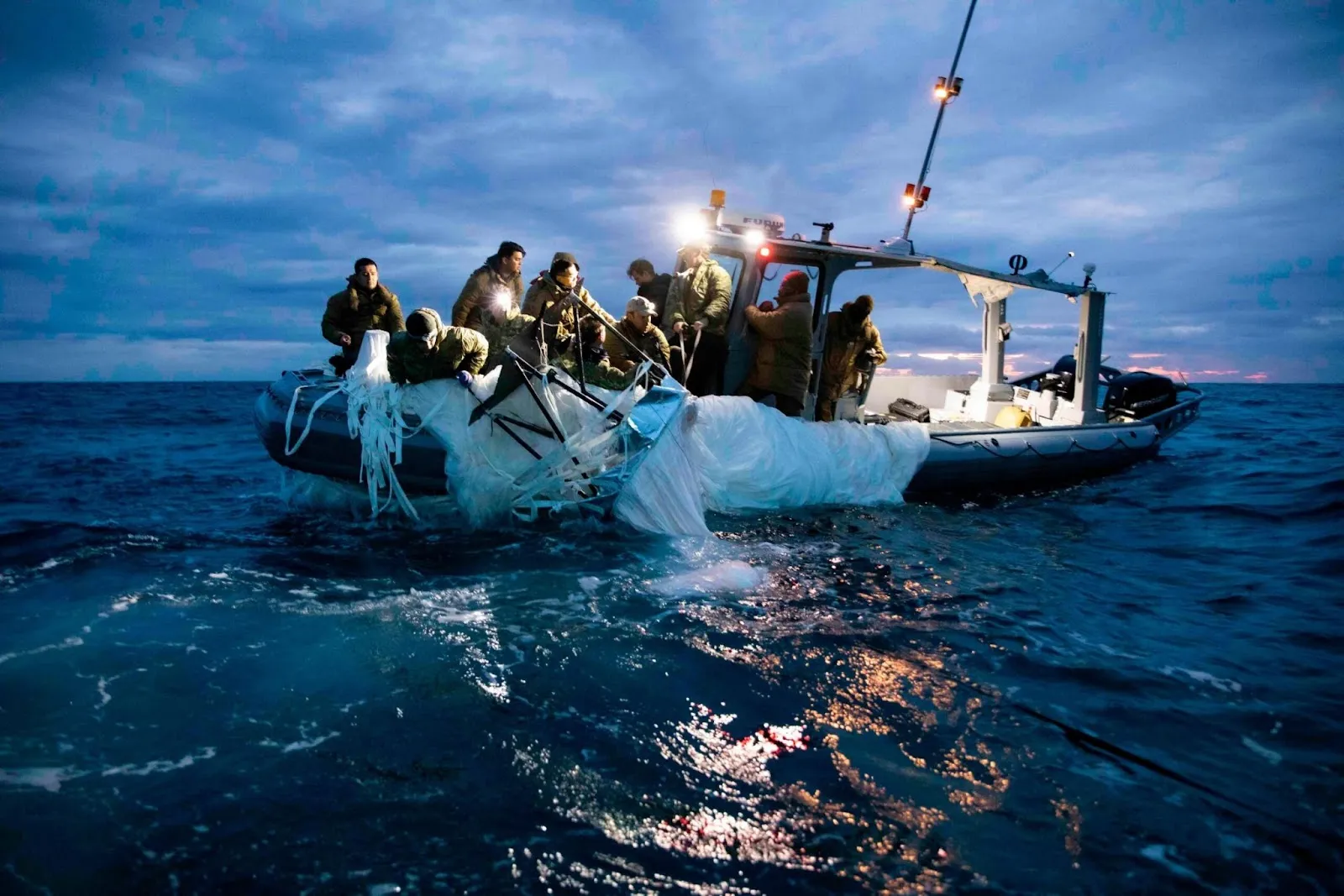How Norad & Other Spymasters Hunted a Rogue Chinese Spy Balloon
A 200-foot balloon the size of a 20-story apartment block doesn’t just plunge out of the sky so when China’s spy balloon began drifting over Alaska on January 28, 2023, Norad was ready to scramble its jets and a dozen Canadian and US spy agencies swung into action.
The North American Aerospace Defense Command’s job is to inform US and Canadian political and military hierarchies simultaneously about a breach of air space. Canada and the US then had to balance intelligence and operational security and public safety, according to retired Major General Scott Clancy, former deputy commander of the Alaskan Norad Region.
As Norad fighters and Canadian CF-18 Hornet military jets powered overhead, pilots knew they were dealing with at least one flying object with a payload the size of a regional passenger jet that likely weighed in excess of 2,000 pounds. They didn’t know if another one was coming.

Spy balloon strategies and intelligence
"There was some speculation about a second one," Norad commander US General Glen VanHerck told reporters. "I launched Norad fighters, Canadian CF-18s, and we were not able to corroborate any additional balloons."
The North American Aerospace Defense Command is responsible for aerospace warnings, aerospace control, and maritime warnings in the defense of North America. So why not just shoot down the first balloon immediately using Norad jets?
There was a risk of falling debris - or worse. The balloon could have been carrying weapons of mass destruction. “Those are the kinds of questions that keep our WMD experts up all night,” China expert and former US State Department psychiatrist Dr. Kenneth Dekleva told SPYSCAPE.

Spy technology
Letting the balloon drift quietly in the early days kept China in the dark about whether its surveillance blimp had been detected or not. While the intelligence agencies determined whether the balloon posed a tactical threat, they also gathered intel about what the balloon was doing and how. "It would be very interesting to know the kind of emission devices that were sending information back to China from this balloon," Clancy said.
While the balloon drifted south from Canada into Montana - home to Malmstrom Air Force Base and one of three US nuclear silos - US Air Force pilots fired up the F118-GE-101 engines on their U-2 spy planes. Their high-resolution imagery indicated the balloon was capable of conducting signals intelligence collection at 60,000 feet. Signals intelligence - or SIGINT - is intelligence gathered by intercepting electronic communications.
Officials determined the Chinese balloon was equipped with multiple antennas and was part of a broader surveillance fleet used in more than 40 countries across five continents. “It had multiple antennas to include an array likely capable of collecting and geolocating communications,” a US State Department official said.
The balloon was equipped with solar panels large enough to produce the requisite power to operate multiple active intelligence collection sensors. It also had propellers and a rudder that allowed it to maneuver over its intended collection target, according to the Pentagon, although the balloon itself was largely carried along the jet stream in the upper atmosphere.
"The brand new social experience where you activate your gaming skills as you train like a spy."
- TimeOut
Take on thrilling, high-energy espionage challenges across different game zones.


China's intelligence collection
Back on the ground, Norad and the Department of Defense’s US Strategic Command coordinated to block the balloon from collecting SIGINT as it drifted eastward but as it traveled, the balloon collected intelligence from several sensitive American military sites, according to NBC News citing unnamed US officials.
Despite the Biden administration’s efforts to block the balloon from gathering intel, China was able to control the balloon so it made multiple passes over some of the sites - at times flying figure-eight formations. The spy balloon also transmit info back to Beijing in real time, mainly electronic signals that can be picked up from weapons systems or include communications from base personnel.
Norad General VanHerck declined to talk about attempts to use ‘non-kinetic’ actions such as electromagnetic or computer network attacks on the balloon, “What I will tell you is we took maximum precaution to prevent any intel collection.”
“We provided counterintelligence messages out of our intelligence shop across the entire Department of Defense and the interagency so that we could take maximum protective measures while the balloon transited across the United States,” General VanHerck said. In other words, they jammed it.

Spy balloon splashdown
The US was keen to salvage as much of the Chinese high-altitude balloon as possible - not only for the safety of South Carolina where the balloon was shot down by a US Air Force F-22 Raptor fighter jet but also to recover and exploit the intel. Washington and Ottawa remained in close contact throughout the week. The US National Security and Intelligence Advisor and US Chief of the Defence staff briefed Canadian Prime Minister Justin Trudeau and Defense Minister Anita Anand on plans to shoot down the balloon on the evening before the splashdown.
The US Navy’s USS Carter Hall under the command of NORTHCOM moved into position in the vicinity of the balloon to collect debris with the assistance of the US Coast Guard and Pathfinder, a Navy ship that conducts survey operations using sonar to map out the debris field.
Pathfinder is capable of conducting oceanographic, hydrographic, and bathymetric surveys of the bottom of the ocean, allowing the US to map the debris field of about 1,500 meters by 1,500 meters - about 15 football fields by 15 football fields.

Spy balloon: How the US Navy and FBI coordinated
Dive teams from the FBI and US Navy worked together on the recovery mission with the FBI tasked with leading the forensic examination of the Chinese balloon and its electronic payload. “Typically, you would expect there to be a high-resolution imaging system and sensor to capture different types of communication signals,” said former CIA officer Dennis Wilder, who also served as the National Security Council's director for China.
Forensic experts from the Bureau’s Operational Technology Division (OTD) - the folks who assess recovered electronic components - and the Bureau’s Laboratory Division are working with the Department of Defense and other government agencies to determine the intent and capabilities of the balloon.
“The first evidence that was received was transported to Quantico,” Eric Pokorak, assistant director of the FBI Lab Division said. He described the search area as a ‘large-scale scene’.
It’s the first time the FBI Laboratory and OTD have dealt with a balloon with surveillance capabilities but it may not be the last. The exact number of balloons in China’s fleet hasn’t been revealed although the US believes the project has also targeted Japan, India, Vietnam, Taiwan, and the Philippines. Similar balloons are likely to have operated over North and South America, South East Asia, East Asia, and Europe, according to the US Defence Department.

Spy balloons vs. satellites
The Chinese balloon was reportedly manufactured by a company linked to the military - the People’s Liberation Army (PLA). A second balloon was spotted over Latin America in early February 2023 - the same week the Chinese spy balloon drifted over North America - and three other unidentified flying ‘objects’ were shot down in North America in the week’s that followed. Their exact composition may never be known.
Prior to the 2023 Chinese spy balloon incident, there were at least four known instances where balloons flew over US airspace during the early Biden and Trump administrations, but those flights were shorter in duration and weren’t detected by Norad at the time, raising further questions, including why?
“As a Norad commander it's my responsibility to detect threats to North America. I will tell you that we did not detect those threats,” General VanHerck said. “And that's a domain awareness gap that we have to figure out.“
As for why any country would use a balloon that is visible to the naked eye instead of a satellite, the mystery hasn’t yet been solved.
“This is an open question that no one is able to answer at this point,” Wilder said. “It is entirely possible that the Chinese People’s Liberation Army conducted this operation without coordinating it appropriately with civilian agencies of the Chinese government that might have objected. Reporting indicates that the Chinese Ministry of Foreign Affairs was completely in the dark when approached by US diplomats last week inquiring about the balloon.”
SPYSCAPE+

Join now to get True Spies episodes early and ad-free every week, plus subscriber-only Debriefs and Q&As to bring you closer to your favorite spies and stories from the show. You’ll also get our exclusive series The Razumov Files and The Great James Bond Car Robbery!


Gadgets & Gifts
Explore a world of secrets together. Navigate through interactive exhibits and missions to discover your spy roles.
Your Spy Skills
We all have valuable spy skills - your mission is to discover yours. See if you have what it takes to be a secret agent, with our authentic spy skills evaluation* developed by a former Head of Training at British Intelligence. It's FREE so share & compare with friends now!
* Find more information about the scientific methods behind the evaluation here.


Stay Connected
Follow us for the latest
TIKTOK
INSTAGRAM
X
FACEBOOK
YOUTUBE